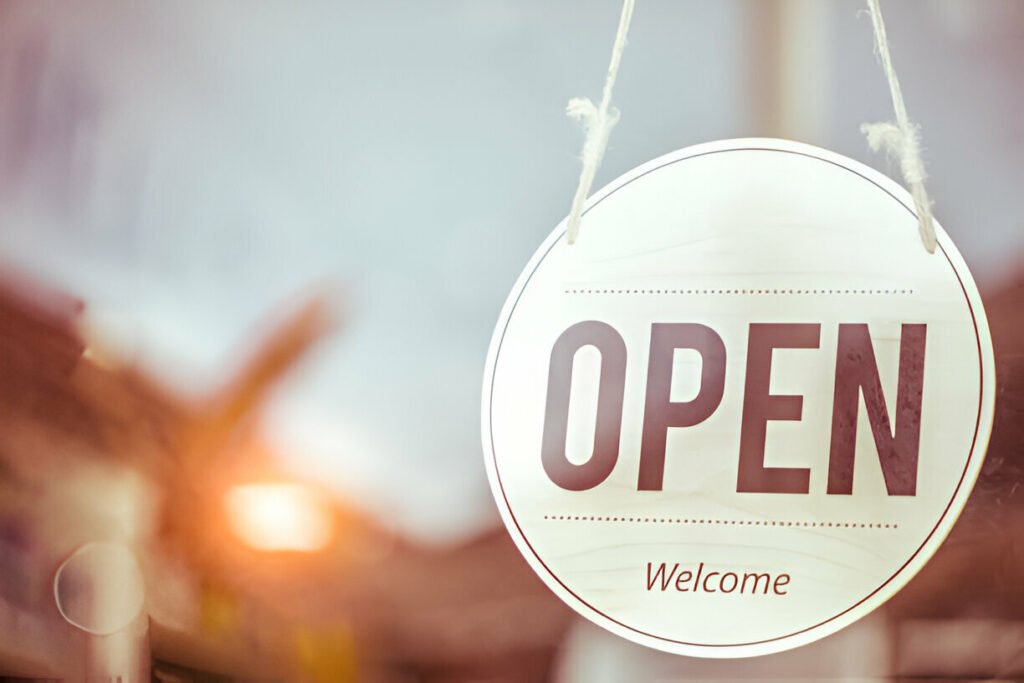Are you a teenager bursting with creativity and wondering how to turn your hobby into a real business? Whether you love making jewelry, drawing, designing digital art, or customizing T-shirts, Etsy could be the perfect platform to showcase your talent and earn money doing what you love.
The best part? You don’t need to be an adult to get started. Even as a teen, you can launch your shop with a little help and guidance.
In this guide, How to Start an Etsy Shop As A Teenager I’ll walk you through 7 easy, detailed steps to start your Etsy shop as a teenager. This isn’t just a business guide; it’s about building confidence, learning real-life skills, and expressing your creativity. Let’s begin!
How To Start An Etsy Shop As A Teenager

Here are the 7 steps to start an Etsy shop as a teenager:
- Choose What You Want to Sell
- Understand Etsy’s Age Policy
- Set Up the Shop with Adult Supervision
- Create a Memorable Shop Name and Branding
- List Your Products Professionally
- Set Prices, Shipping, and Payment Details
- Promote Your Shop and Grow Your Business
Step 1: Choose What You Want to Sell
This is where your journey begins—by deciding what product or service you’ll offer in your Etsy shop. If you’re a teenager, you might be thinking, “But what can I really sell that people would buy?” The answer is: a lot more than you think.
Etsy is a marketplace full of creative, handmade, and one-of-a-kind items. It’s not about being perfect or having a huge inventory it’s about sharing your creativity with the world in your unique way.
Start with what you love
The best place to begin is with something you already enjoy doing. Ask yourself:
- Do I like drawing, painting, or crafting?
- Have I ever made something that someone complimented or wanted to buy?
- Is there a hobby I could turn into a product?
For example:
- If you love drawing, you could create digital art prints, printable wall décor, or even custom portraits.
- If you enjoy crafting, think friendship bracelets, resin keychains, beaded jewelry, or crochet items.
- If you’re into planning or organizing, you could make printable planners or study guides.
Check what sells—but make it yours
Once you have a few ideas, browse Etsy and look for similar products. Pay attention to:
- What’s trending?
- What designs or styles do customers seem to love?
- What’s missing—or what can you do differently?
It’s okay if others sell the same type of product. What matters is your personal touch. Maybe your color choices, packaging, or themes are different. That’s what makes your shop stand out.
Consider digital vs. physical products
If you don’t want to deal with shipping and packaging, consider starting with digital products. These could be:
- Printable to-do lists
- Editable Canva templates
- Phone wallpapers
- Digital stickers for planners
With digital items, you create the file once and sell it over and over, perfect for a beginner with a low budget.
Keep it simple at first
You don’t need a massive collection of products to launch. Start with 1–3 well-made items. This helps you focus on quality, understand the process, and grow with experience.
Pro Tip: Think like a customer. Would you buy this? Would you gift it to a friend? If the answer is yes, you’re on the right track.
In short, choose something you’re passionate about, and build from there. Your excitement will shine through your shop, and that’s what customers connect with most.
Step 2: Understand Etsy’s Age Policy
Before you dive into creating listings and marketing your shop, it’s vital to understand Etsy’s age-related rules. This step ensures you’re set up correctly, legally, and with the right support.
Who Can Open an Etsy Account?
- You must be 18 or older to open an Etsy shop and manage payment accounts in your own name.
- If you’re between 13 and 17, you can sell on Etsy—but only with a parent or guardian who owns the account. They must create the Etsy account and are legally responsible for it.
- Kids under 13 cannot have an Etsy account at all—sales must be handled entirely by an adult.
Why This Rule Exists
Etsy follows international regulations about minors and money. Because selling involves contracts, payments, taxes, and legal responsibilities, it requires an adult to take full responsibility.
What This Means for You
- Your parent/guardian must open and register the Etsy shop using their name and payment information.
- They will handle payments, taxes, and customer issues.
- You’ll handle the creative side—designing, making products, taking photos, and managing listings and social media.
Setting Clear Roles
Make sure you and your parent have a conversation about your roles:
- They handle the money side (banking, fees, taxes).
- You handle creation, customer interaction, and marketing.
- Work out how to keep track of profits, purchase materials, and reinvest in the business.
Helpful Approach
- Document your agreement. Write down who does what, how earnings will be handled, and how expenses will be managed.
- Build trust. Show your parent you’re committed—create a simple plan or timetable.
- Stay organized. Keep receipts, materials inventory, and notes on earnings so everything is transparent.
Step 3: Set Up the Shop with Adult Supervision

Once you’ve picked your product and understand the age rules, it’s time to open your Etsy shop, with a trusted adult at the helm. This step is where your creative idea starts taking real form.
1. Sit Down with Your Parent or Guardian
Have a relaxed but focused chat. Explain:
- Your product idea and why you’re excited about it.
- You’ll handle creativity—making items, taking photos, writing listings.
- They’ll handle the account setup, payments, and managing fees.
Make sure they’re comfortable with their legal responsibility. It’s all about teamwork!
2. Create the Etsy Account Under Their Name
Here’s what you both need to do:
- Go to Etsy.com and click “Register.”
- Your adult fills in their name, email, and a secure password.
- Connect a bank account or PayPal under their name for payouts.
- Verify identity by uploading ID if Etsy requests it—this might include a driver’s license or passport.
They can officially own the shop, but you’ll be the business’s creative director.
3. Set Shop Preferences
Together, choose:
- Shop language, country, and currency: These settings help Etsy show your shop to the right customers.
- Auto-renew listings (optional): Automatically renew listings every four months to keep them active in search.
- Location (city & country): This appears on your shop and can help with shipping estimates.
4. Pick a Great Shop Name
A good shop name is:
- Short (4–20 characters)
- Easy to remember and spell
- Matches your brand or product vibe
5. Add Branding Touches
This step helps make your shop look professional and welcoming:
- Shop Icon/Logo: Use a free tool like Canva to create something clean and simple.
- Banner/Header Image: Reflects your shop’s style—try lifestyle shots, product previews, or mood visuals.
- About Section: Write a friendly paragraph about:
- Who you are
- What you love to create
- Why you make these products
- (Optional) Include a photo of you at work or a short video.
6. Work on Shop Policies
Even as a teen-run shop, clear policies build trust:
- Processing Time: Explain how long it takes to make and send an item.
- Shipping: Give estimated delivery times and info on how buyers can track orders.
- Returns & Exchanges: Decide if you’ll accept returns, partial refunds, or offer replacements.
- Custom Orders: Share how people can request personalized items and what the steps are.
Have your parent approve these, since they’re legally important.
7. Final Checks Before You Launch
Before clicking “Open Your Shop,” double-check:
- All fields are filled correctly (URLs, images, policies).
- Payment information is set and verified.
- Your shop name and branding feel complete.
Why This Setup Matters
- Legal security: Having an adult on the account keeps things compliant with Etsy’s rules and the law.
- Clear responsibilities: You manage creativity; they manage money and rules.
- Trust-building: With a polished shop and clear policies, customers feel more comfortable buying.
Step 4: Create a Memorable Shop Name and Branding

Your shop name and branding are the first things buyers see and they say a lot about who you are and what you sell. As a teen seller, you want your shop to feel fun, creative, and trustworthy. This is your moment to shine and make your store stand out in a sea of Etsy shops.
How to Choose a Catchy Shop Name
Think of your shop name like your brand’s personality it should reflect your product style, be easy to remember, and feel unique.
Here’s what makes a great Etsy shop name:
- Short and sweet (4–20 characters)
- Easy to spell and pronounce
- Relevant to your products
- No special symbols or spaces
- Not already taken on Etsy or social media
Shop name ideas:
| Product Type | Fun Shop Name Ideas |
|---|---|
| Handmade Jewelry | GemGlowStudio, TeenBeadsCo |
| Digital Stickers | PixelPopPrints, VibeDoodles |
| Crochet Plushies | StitchyBuddies, SoftLoopShop |
| Study Printables | StudentFlowDesigns, PlanifyTeen |
Tips for brainstorming:
- Use words that describe your products (e.g., “cozy,” “spark,” “mint,” “thread”).
- Combine two words (e.g., “DoodleNest” or “TwistCharm”).
- Add your name or initials if it fits (e.g., “ArtByLena”).
Once you’ve got a few ideas, check their availability on Etsy, Instagram, and Gmail. You may want to reserve matching social media handles later for branding.
Design Your Shop Branding
Branding is more than just a name it’s the whole look and feel of your store. A consistent, attractive shop can build trust with buyers and make your shop feel more professional (even if you’re a beginner).
Here’s what to work on:
1. Logo / Shop Icon
- Keep it simple and clear.
- Use a tool like Canva or Adobe Express to create it.
- Think colors and symbols that match your vibe—minimal for planners, bright for crafts, soft pastels for handmade items.
2. Shop Banner or Cover Image
- Use this space to show off your best work or create a welcoming feel.
- Include product photos, a tagline, or even your workspace.
- Dimensions: Etsy recommends 3360 x 840px for large banners.
3. Color Palette & Fonts
- Stick to 2–3 main colors and 1–2 fonts.
- Use them consistently on your listings, packaging, and social media.
- It builds a recognizable look for your brand.
Write a Strong Shop Bio & About Section
Buyers want to know there’s a real person behind the shop, especially when you’re a young creator. Use the bio and “About” section to tell your story.
Include:
- Your name and age (if you’re comfortable sharing)
- What inspired you to start
- What makes your products special
- A thank you message to your buyers
Step 5: List Your Products Professionally

Once your shop is set up and branded, it’s time to start uploading your products. This is where your creativity meets strategy. A well-made product listing isn’t just a photo and a title—it’s a powerful sales tool that helps your product stand out, earn trust, and get found in Etsy search.
Here’s how to create professional, scroll-stopping listings—even as a beginner.
Use Clear, High-Quality Photos
Photos are the first thing a customer sees—and often the reason they click (or don’t).
Aim for:
- Natural lighting: Shoot near a window during the day. Avoid harsh shadows.
- Clean backgrounds: Use white, pastel, or wood textures. Keep it simple so your product pops.
- Multiple angles: Etsy lets you upload up to 10 images. Show the front, back, close-ups, and even your product being used (called a “lifestyle photo”).
- Zoomed-in details: Highlight textures, finishes, or any customization.
Optional but helpful: Add a short product video (5–15 seconds) showing your item in use. It increases trust!
Write a Descriptive, Keyword-Rich Title
Your title isn’t just a name—it’s also how Etsy’s search engine knows what you’re selling.
Good title formula:Main Keyword – Style or Use – Ideal Customer or Occasion
Example:
“Boho Beaded Bracelet – Handmade Jewelry Gift – Teen Girl Birthday Accessory”
Use words people search. Avoid cute but vague titles like “Moonlight Magic” if the product isn’t clear.
Add Accurate Tags and Categories
Etsy gives you 13 tags to help people find your product. Use them wisely!
Tag tips:
- Use phrases buyers search (e.g., “crochet frog plush,” “digital student planner”)
- Include style words (e.g., “boho,” “minimalist,” “aesthetic”)
- Think occasion-based (e.g., “back to school gift,” “Valentine’s Day printable”)
Also, choose the most accurate category (like Jewelry > Bracelets) to help Etsy show your listing in the right places.
Write a Clear and Friendly Description
This is where you answer all the questions a buyer might have. Be honest, helpful, and human.
What to include in your description:
- What is it?
“This is a handmade keychain with soft clay charms and a stainless steel ring.” - What materials are used?
“Made from air-dry clay, coated with clear varnish for durability.” - Size and variations
“Available in 2 sizes – 2” and 3”. Custom colors available on request.” - How to use it
“Perfect for backpacks, keyrings, or as a cute gift for friends!” - Shipping & processing time
“Ships within 3–5 business days. Packaged with care and tracking included.” - Gifting?
Mention if it comes gift-wrapped or with a note.
Set a Fair and Profitable Price
You want to make money, but your pricing also has to make sense to shoppers.
Consider:
- Material costs (beads, thread, packaging)
- Your time (yes, your time matters!)
- Etsy’s fees (usually around 6.5% + $0.20 per listing)
- Shipping (build it into the price if you offer free shipping)
Example:
If it costs $3 to make a bracelet, and you want $5 for your time, and Etsy takes $1 in fees, price it around $9.99 to make a profit.
Add Inventory, Variations, and Personalization
- Quantity: How many are available? Etsy tracks stock for you.
- Variations: Sizes, colors, or styles? Add dropdown options.
- Personalization: Let buyers type in names or notes if you offer custom items.
Make it easy for the buyer to select exactly what they want without messaging you first
Step 6: Set Prices, Shipping, and Payment Details
Now that your product listings look polished, it’s time to make sure everything behind the scenes—like pricing, shipping, and payments—is set up professionally and correctly.
Even as a teenager, this part is totally manageable (especially with a parent or guardian helping you with the financial side). Let’s break it down:
Set a Price That Covers Everything (And Makes You Profit)
You’re putting time, effort, and materials into your product, so your pricing should reflect that. But pricing too high may scare customers away, while pricing too low might hurt your earnings.
Here’s a simple pricing formula for beginners:
Cost of Materials + Time + Etsy Fees + Shipping (if free) = Final Price
Example:
- Beads and string: $2
- Your time: $5
- Etsy fees: $1
- Shipping: $2
→ Price: $10 (rounded to $9.99)
Make sure you’re earning at least a few dollars per sale after all costs. And remember—if you offer free shipping, include that cost in your final price.
Plan Your Shipping Strategy
Shipping can seem tricky at first, but Etsy makes it easier than you think.
Here’s how to approach it:
1. Choose Your Method:
- Flat Rate Shipping: One set price for everyone (good for light items like stickers or keychains).
- Calculated Shipping: Etsy figures the cost based on your location and the customer’s (requires package weight and size).
- Free Shipping: Buyers love this. If you can, include the shipping fee in your product price.
2. Estimate Your Processing Time:
- How long will it take you to make and ship the item?
- Be honest. If it takes 3 days to make, set a 3–5 day processing time.
3. Buy and Print Labels:
- You (or your parent) can buy shipping labels directly on Etsy.
- Then, print them at home and stick them on the package—no long post office lines needed.
4. Add Tracking (If Possible):
- It makes buyers feel safe and builds trust in your shop.
Package Your Orders With Care
The way you package your product is part of your brand—and a great way to leave a lasting impression.
Include:
- A small thank-you note or card
- Tissue paper, washi tape, or cute stickers
- Eco-friendly packaging if you want to stand out
Buyers often leave reviews just because your packaging made them smile!
Set Up Payment Info (Parent/Guardian Required)
Since you’re under 18, your parent or guardian must handle all payment setup. Here’s what they need to do:
- Add a payout method: Bank account or PayPal under their name.
- Add a credit/debit card: For Etsy to charge fees and listing renewals.
- Verify their identity: Etsy may request ID for security reasons.
They’ll receive your earnings and can transfer them to you (or help you reinvest in your business). Make sure you both agree on how you’ll manage the money!
Step 7: Promote Your Shop and Grow Your Business
You’ve created your products, set up your shop, added professional listings, and set pricing. Now what?
It’s time to tell the world your shop exists!
Even if you’ve made the best bracelet or digital planner in the world, people won’t find it unless you promote it smartly. Don’t worry—you don’t need to spend money on ads. As a teenager, you already have one of the best marketing tools available: your creativity + social media.
Use Social Media (Your FREE Marketing Tool)
Instagram and TikTok are perfect for showing off your process, products, and personality. The goal is to connect with your audience, not just sell.
Here’s what to post:
- Behind the scenes of you making products
- Packing customer orders (people love “pack with me” videos)
- Time-lapse or process videos
- Finished product reveals
- Customer shoutouts or reviews
- New listings or seasonal promotions
Tips:
- Use trending music and hashtags like
#EtsyTeen,#SmallBusinessCheck, or#TeenBoss - Don’t overthink it—raw and real posts often perform better than polished ones
Post 2–4 times a week to stay active and reach new people.
Use Pinterest for Long-Term Visibility
If you sell anything visual (stickers, prints, planners, art), Pinterest can bring traffic for weeks or even months after posting.
- Turn your product images into pins
- Add a short description and your Etsy shop link
- Join group boards or create your own brand board
Pinterest is more like a search engine than a social app—it helps you get found over time, not just instantly.
Tell Your Family and Friends
Word of mouth is still super powerful. Ask people you trust to:
- Share your shop link on social media
- Leave an honest review after buying something
- Recommend your shop to their friends
You never know—your first 10 sales might come from your own circle!
Use Etsy SEO (Search Engine Optimization)
Etsy works like Google—people type in what they’re looking for, and Etsy shows results that match. To show up in search:
- Use clear, keyword-rich titles (e.g., “Printable Daily Planner for Students”)
- Fill all 13 tags with phrases people might type (e.g., “teen planner,” “digital pdf download,” “study organization”)
- Repeat important words in your description—but naturally
It might take a week or more to appear in Etsy search, so be patient and keep listing consistently.
Run Small Promotions or Giveaways
Once you’ve had a few sales, consider:
- Offering a limited-time discount
- Creating a bundle deal (buy 2, get 1 free)
- Running a giveaway on Instagram or TikTok to build buzz
Make sure to follow platform rules and get your parent’s approval first.
Track Your Progress
Use Etsy’s built-in dashboard to track:
- How many views your shop is getting
- Which listings are most popular
- Where your traffic is coming from
This helps you understand what’s working and where to improve. Celebrate your small wins—your first sale, your first 5-star review, even your first favorite!
Top Tips for Starting an Etsy Shop as a Teenager
- Start With What You Love: Choose a product you genuinely enjoy creating. Passion shows through your work, and it keeps you motivated when sales are slow or when you’re still learning.
- Involve a Parent or Guardian Early: Since teens under 18 can’t legally own an Etsy account, talk to your parent or guardian early. Be honest, prepared, and show them your plan—they’ll likely be impressed and supportive!
- Keep It Simple at First: Start small. Focus on 1–3 core products instead of launching with too many options. It’s easier to manage, perfect your process, and grow gradually.
- Use Free Tools Like Canva: Create logos, product mockups, banners, and social media posts using free design tools like Canva. It gives your shop a professional look, without needing graphic design skills.
- Take Great Photos in Natural Light: Photos can make or break a sale. Use your phone, a clean background, and daylight near a window. Show different angles and close-ups.
- Write Listings Like You’re Talking to a Friend: Use clear, friendly language. Tell your buyer exactly what the item is, how it’s made, and what makes it special. Don’t overcomplicate it—be yourself!
- Research What’s Selling, Then Make It Yours: Look at bestsellers on Etsy for inspiration, not copying. How can you add your own unique twist? Different colors, styles, or packaging can set you apart.
- Practice Etsy SEO (It’s Easier Than It Sounds!): Use keywords in your titles, tags, and descriptions so people can find your items. Think about what someone would type to search for your product.
- Promote on Social Media—For Free: Instagram, TikTok, and Pinterest are your best friends. Show your work, share behind-the-scenes, and post consistently to build your audience.
- Be Patient and Kind to Yourself: Sales may not come overnight. That’s okay. Every big shop started small. Keep creating, improving, and learning. Your effort will pay off.
- Use Profits to Reinvest in Your Business: Instead of spending your first few sales, save them to buy better materials, packaging, or tools that help you grow faster.
- Celebrate Small Wins: Your first sale, your first favorite, your first follower—they’re all big deals! Don’t forget to enjoy the journey.
FAQs About How To Start An Etsy Shop As A Teenager
Can a 14-year-old start an Etsy shop?
Yes, but only with a parent or guardian who creates and manages the account.
Do I need to register a business?
Usually, no. For hobby-level income, it’s fine. But if you make regular sales, ask your parent to check local rules.
What if I can’t afford supplies?
Start with digital products or simple crafts. You can reinvest your profits into better materials later.
How much money can I make?
Some teens make $50–$100/month. Others scale up to hundreds. It depends on your effort, product, and consistency.
Hi there. My name is Abbas Khan. I’m passionate about finding smart ways to save and make money from anywhere in the world.
Learning how to earn remotely and manage my finances gave me true freedom, and now I want to help you do the same.
Join me as I explore money-saving hacks, income ideas, and tips to build a flexible, location-independent lifestyle you’ll love.

